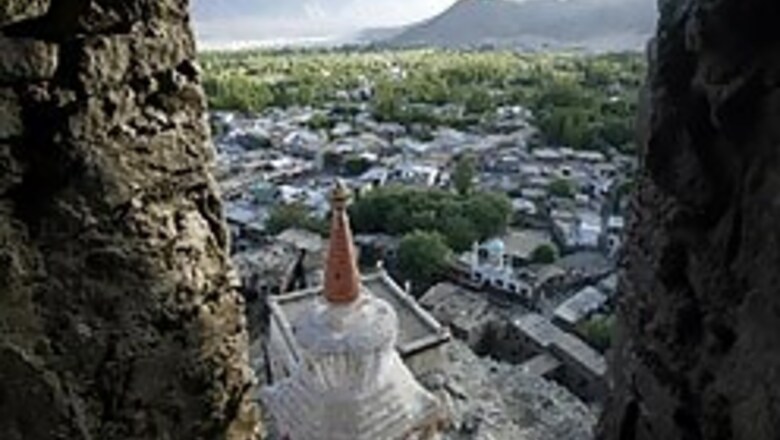
views
New York: Two places in India which have been adjudged as among the top 10 ancient and treasured sites destinations one must visit before they disapear due to environmental causes, over-tourism or conflict.
The list was compiled by the men’s lifestyle website, askmen.com.
1. Dampier Rock Art Complex, Murujuga, Australia: The largest collection of rock art in the world thought to date back to 10,000 BC. Industrial development has already damaged 7.2 percent to 24.4 percent of the petroglyphs, and the recent finding of natural gas in the area is a further threat.
2. Sonargaon-Panam City, Bangladesh: In this ancient city, a range of architecture from the Sultanate, Mogul and colonial periods of Bangladesh dates from the 15th to the 19th century. Many Mogul and colonial monuments are also found here. Plagued by a range of problems including flooding, rising sea levels, earthquakes, illegal development and occupation, as well as vandalism, Sonargaon is in serious danger of being wiped out.
3. Chinguetti Mosque, Mauritania, West Africa: Found in one of Islam's seven holy cities, the medieval Chinguetti Mosque in Mauritania, West Africa, was constructed in the 13th century and was a stopping point for Sahara traders. Desertification in this endangered locale, plus flash flooding, extreme temperatures and soil erosion, represent constant threats to this UNESCO World Heritage site.
4. Panama Canal, Panama City, Chagres River: One of the most impressive modern engineering feats, the Panama Canal continues to be used by the international shipping community. Up to 40 ships a day pass through this canal but as demands for using the canal rise the average amount of water in Gatun Lake is decreasing. Largely as a result of deforestation, an increasing amount of silt is on the bottom of the lake, which reduces the number of ships the passageway can take.
5. Dhangkar Gompa, Himachal Pradesh, India: Part of the Dhangkar complex and one of the five major Buddhist monastic centres, this temple, built some thousand years ago, is found on a remote region of the border between India and Tibet. As a result of neglect in addition to erosion of the hill upon which the temple rests, this important and ancient site is deteriorating.
6. Old Damascus, Syria: One of the oldest, inhabited cities in the world, Old Damascus is slowly being demolished by modern construction. The area is home to a wealth of ancient sites, including eight city gates and many sites referenced by Christian and Islamic religious texts. Recently, Bab Tuma (Saint Thomas' Gate), which leads to the old Christian quarter of Old Damascus, has been recognized as being threatened by demolition and abandonment.
PAGE_BREAK
7. Babylon, Iraq: Lying 80 km south of Baghdad, Babylon was originally a city of Mesopotamia, a region regarded by many as one of the cradles of civilization. Since 2300 BC, many have also considered Babylon to be a holy city. This ancient site is certainly a significant one in human history and is one of the numerous historic sites in Iraq damaged by recent conflict.
8. Leh Old Town, Ladakh, India: The ancient capital of the kingdom of Ladakh, Leh Old Town is an intact and rare medieval city in the Himalayans, known for its tourist treks between monasteries and rich diversity of wildlife like the endangered snow leopard. Changing weather patterns that include heavy rain are damaging the city while the balance of development and maintaining traditional architecture is difficult.
9. The Coral Triangle, Sulu and Sulawesi Seas: In the seas between Indonesia, Malaysia and the Philippines, the Coral Triangle has the richest variety of coral reef, plant and animal life in the world, with over 450 types of coral here alone. A recent study from Johns Hopkins University found about 70 percent of coral reefs in the seas of Southeast Asia are endangered with the culprits including fishing practices that use cyanide and dynamite, as well as overfishing, coral bleaching, sedimentation and pollution.
10. Greenland: The Greenland ice sheet covers about 81 percent of the island, and comprises 1/20 of all the ice in the world. Should it melt, the country will split and become an archipelago and the famed glaciers of the region will no longer be a tourist attraction. Polar bears will lose their habitat, and rapidly melting ice could result in massive flooding in regions of the United States, including Los Angeles.
(Reuters doesn’t endorse the list)



















Comments
0 comment